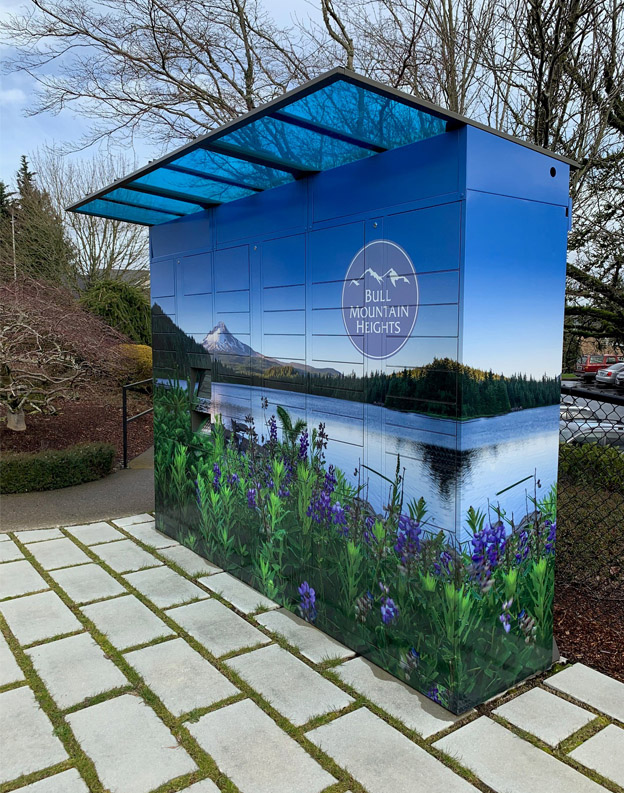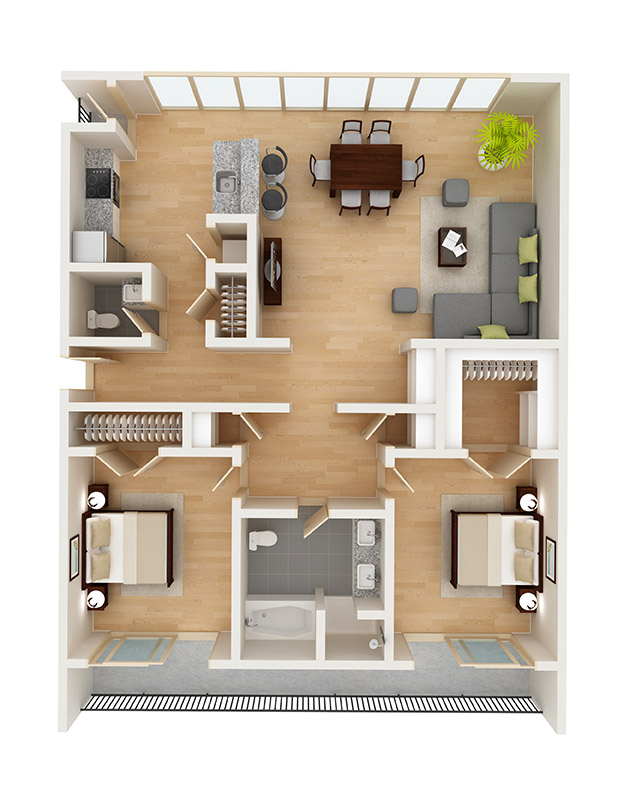Zeitgeist - Sign of the Times
Apartment Owners Adjusting to the Home Office
It’s now been a year since employees across the U.S. were sent home to work. As we reflect on the changes in the workplace and look toward the post-pandemic normal, many employers are considering some form of flexibility for employees to continue to work remotely. According to an October 2020 survey by S&P Global Market Intelligence, 64% of companies expect having employees work from home – at least part of the time – will be a permanent change. And because homes are now becoming semi-permanent offices, apartment owners and operators must also adapt. We’ve summarized some of these adaptations below:
Internet – Among the highest priorities for owners is providing quick and consistent internet service. Multifamily operators are increasingly bringing fiber optic and other forms of premium internet service to properties to meet the growing demand. If done correctly, this can be a win-win as owners often receive profit-sharing from the service provider and residents receive best-in-market internet service.
Utilities – With more residents at home during the day, utility bills and frequency of trash collection have increased substantially. Landlords without programs to bill-back utility charges to tenants are facing drastic cost increases. Tenants in buildings with old-school owners who pay all utility costs should expect this perk to go away soon.

Packages – If the proper systems are not in place, the coordination of package deliveries at large apartment communities can be a full-time job. Automated package lockers – now ubiquitous with institutional apartment owners – relieve the staff of package handling duties and allow residents to securely receive packages 24/7 with digital delivery notification. Like internet service, this amenity can be billed back to the residents and create a small profit center for owners.
With the implementation of these amenities and operational strategies, apartment owners can provide value to the work-from-home cohort and differentiate themselves from the competition while increasing revenue.
(Editor’s note: Pathfinder has been implementing these initiatives throughout our portfolio. At The Station Apartments in Littleton, CO – featured in this issue’s “Trailblazing” section – we are designing our first rentable co-work space.)
Tenants/Developers Gravitating Towards Larger Apartments
As Americans are spending more time at home – a trend that is expected to continue with the ongoing work-from-home movement – an apartment’s size is more critical than ever. As a result, larger apartment floorplans are becoming more desirable and smaller units are seeing significantly less demand and higher turnover rates. Prior to the Pandemic, “micro-units” was a major buzzword and developers were prioritizing location and neighborhood amenities over livable space. Today, studios and micro-units in urban locations are oftentimes sitting vacant and/or seeing drastic price reductions. Meanwhile, tenants who previously were satisfied with one-bedroom units now want the additional space from a two-bedroom unit.

Apartment developers are taking note and starting to incorporate fewer studios (or shifting to larger studio units) and more one-, two-, and even three-bedroom apartments into their designs. This represents a major shift in development trends and is forcing developers to reexamine their expense structures and financial forecasts, especially land acquisition costs, since larger units were generally less profitable. Looking ahead, the premium rents possible from larger units may turn this equation on its head.
When it comes to designing smaller units, developers are focusing on layouts that are conducive to living, working and working-out all within the same space. Concepts like yoga-mat, stationary bike and office nook placement are now a focus when designing studio or one-bedroom apartments. Dens, previously thought to be obsolete, are becoming increasingly popular as they provide flexible, in-home workspace. Likewise, business centers and co-workspaces with access to scanners and copy machines are being incorporated into apartment clubhouse designs. Similarly, apartment investors have noted the decrease in demand for and increase in turnover of their smaller units and are adjusting their investment parameters accordingly.
Share this Article
